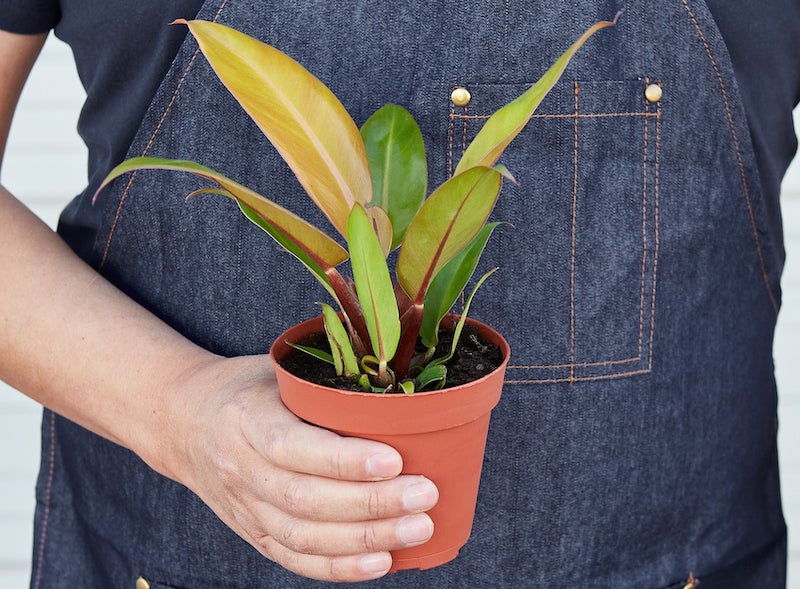Controlling aspects of the growing process like temperature and humidity can be a challenge when growing philodendrons outdoors. But there are many benefits of moving your philodendron plant outside during the summer months. For example, your philodendron will thank you for the boost in sunlight and fresh rainwater!

Philodendrons naturally grow in a wide variety of warm tropical environments. Their native habitat is mostly localized in Central and South America, with some species originating from the West Indies. Philodendrons are understory plants that prefer to receive filtered sunlight and part shade. You’ll need to try and mimic its native environment in your garden.
When To Put Philodendrons Outside
You can transplant your philodendron outdoors when nighttime temperatures are consistently above 50° Fahrenheit and there is no risk of frost. Gradually introduce the philodendron to its new outdoor environment a few hours per day at first. Slowly increasing the amount of time it spends outdoors will allow the plant time to acclimate and become more resilient.
If you live in USDA hardiness zones 9a - 11b, growing philodendrons outdoors should be fairly easy, both in-ground and potted. But outside those growing zones, you run the risk of harming the plant. Temperatures below 50° Fahrenheit can seriously damage the foliage and roots, so philodendron cannot stay outside year-round in cold climates. The vast majority of philodendrons prefer to live in temperatures between 70° - 80° Fahrenheit.
When To Bring Philodendrons Indoors
Bring your potted philodendron indoors when nighttime temperatures start dropping close to 50° Fahrenheit. If you live in an area that has warm winters and hot summers, you can likely grow philodendrons in the ground without worrying about moving them around. It’s best practice to quarantine any plant before it returns indoors, in order to make sure any potential pests or diseases don’t spread.
Place the plant in a “quarantine zone” away from all other houseplants for about a week or so. Introducing pests into your home is no fun, so remember to spray your plants with water to wash off any hitchhikers. Do this when it’s still warm so that the foliage can dry out more rapidly. As an extra precaution, you may want to give the stems a light spray with some horticultural soap for indoor plants.

Caring For Philodendrons Outdoors
Keep your philodendron’s soil moist, but not soggy. The soil should be well aerated and able to drain excess water. Keep your philodendron out of direct sunlight to avoid scorching the leaves. These plants naturally grow under forest canopies and prefer part shade. Reduce the risk of damage from heavy winds and rain by grouping the plants close together, or by placing them under a secure structure like a patio, pergola, or gazebo. Water these plants when the soil feels dry, about once per week, depending on your climate and the container size. Many species of philodendrons are able to tolerate brief periods of dryness. Fertilize these plants regularly throughout the spring and summer growing season.
 |
Author Chris Link - Published 3-23-2023 |
